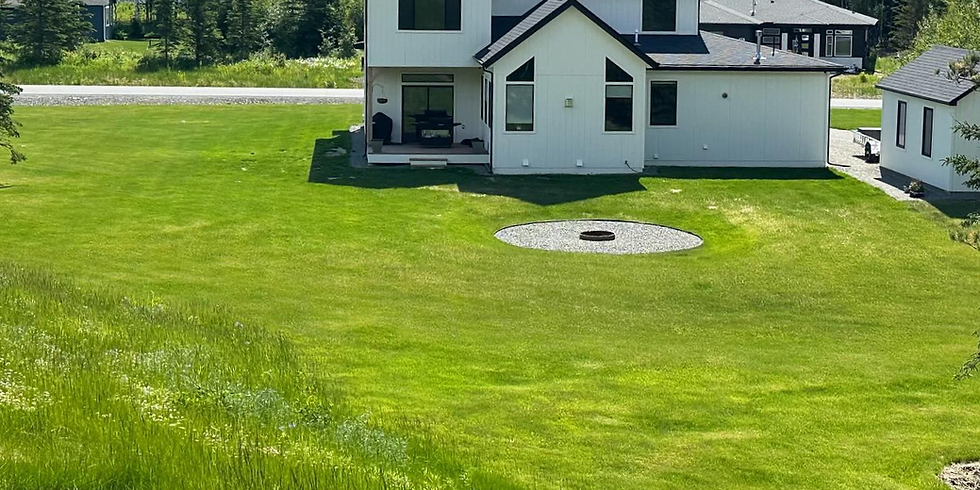Year-Round Lawn Care Wasilla AK Homeowners Can Rely On
- support710287
- Apr 23
- 3 min read

A good lawn in Wasilla doesn’t happen by accident. Between clay-heavy soils, late thaws, and dry summers, it takes a focused approach to get grass growing and keep it healthy all season long.
Whether you're working with a small residential lawn or managing a multi-acre property, understanding local conditions and timing can help you avoid the most common setbacks—like patchy growth, drainage problems, or heavy moss buildup.
When should you start lawn care in Wasilla AK?
Most lawn work in the Mat-Su Valley begins in May, once the ground has thawed and dried out. Trying to aerate, seed, or fertilize too early often wastes time and materials—soil needs to be workable and above freezing for anything to take hold.
The key windows for lawn care in Wasilla AK are:
Spring (May–June): Cleanup, aeration, dethatching, fertilizing, reseeding
Summer (June–August): Mowing, watering, weed control
Fall (August–September): Fertilizer boost, overseeding, prep for winter
If your lawn consistently struggles in the same spots, that’s often a sign of underlying grading, soil compaction, or water runoff issues.
How to Plan Lawn Care Wasilla AK Properties Actually Benefit From
Start with the basics: know your soil type, check for drainage issues, and test your watering coverage. In Wasilla, compacted soil is a common issue—especially in new construction areas where the topsoil was removed or disturbed.
You’ll also want to:
Rake and clear debris early to let the ground breathe
Aerate if water pools or grass grows unevenly
Apply a slow-release fertilizer that matches your grass type
Reseed bare patches with cool-season blends suited to Southcentral Alaska
For yards with steep slopes or low-lying wet zones, consider adjusting the landscape or rerouting water to improve long-term turf health.
What grass grows best in Wasilla?
The best grass for Wasilla is typically a blend of Kentucky bluegrass, fine fescue, and perennial ryegrass. These cool-season varieties handle cold nights, moderate drought, and recover well from traffic or snow cover.
Over time, local conditions will “select” which species thrive—so it’s normal for certain grasses to dominate in shaded or wetter areas.
How often should you mow and water?
In summer, plan to mow weekly and keep grass at about 3 inches tall. This height protects the roots from heat and keeps weeds down. Watering is typically needed 2–3 times a week, early in the morning, depending on rainfall.
For newly seeded or hydroseeded lawns, water more frequently during the first few weeks to keep the surface consistently moist.
Lawn care is just one part of managing a healthy, functional property. If your yard struggles with poor drainage, erosion, or snow pileup, our property maintenance services can help identify root issues and build a better baseline. From seasonal prep to gravel leveling and driveway cleanup, we handle the details that keep your yard working—not just looking good.
Tired of constant reseeding or fighting with uneven lawns? Our landscape team can design better layouts, regrade problem areas, and build features that work with—not against—your site conditions. Whether it's native turf, gravel edges, or full renovations, we tailor every plan to Wasilla’s soils and seasons.
Lawn care in Wasilla is about timing, soil, and knowing how to work with your land—not against it. When the plan fits your conditions, a better lawn becomes easier to maintain, season after season.
External resource: University of Alaska Fairbanks – Lawn and Garden Care in Alaska







Comments